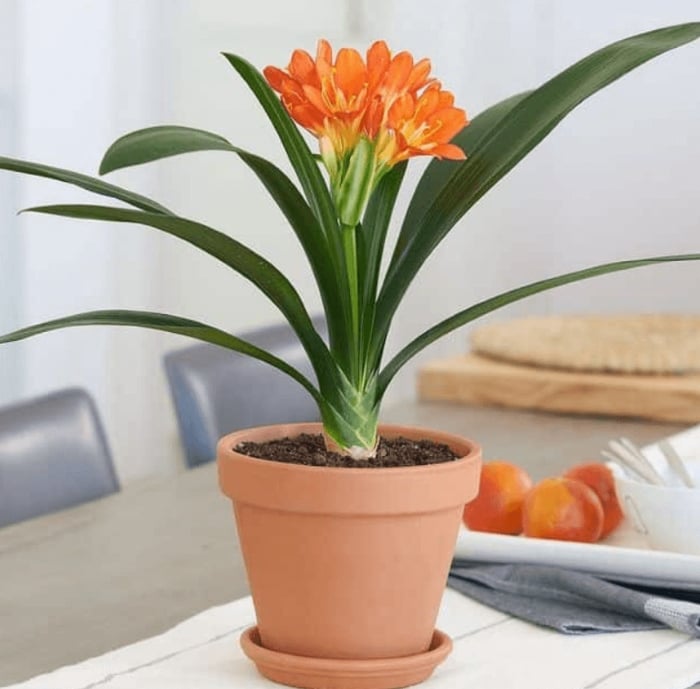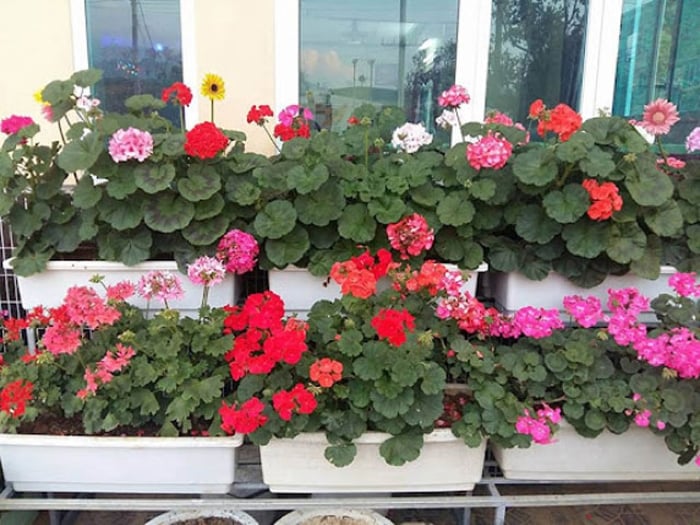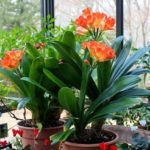Discover four flower species that sleep during the summer, awaken in the autumn, and bloom vibrantly in the winter:
1. Cymbidium Orchid
The Cymbidium Orchid is a heat and sunlight-sensitive plant. When summer temperatures rise above 32 °C, the plant essentially stops growing and enters a dormant state.

As temperatures cool in the autumn, the Cymbidium Orchid gradually resumes normal growth and will begin to flower.
During the autumn, with cooler temperatures, the orchid starts to grow again, and many will develop flower buds at this time. When caring for the plant, it is advisable to start adding a small amount of phosphorus and potassium fertilizer. Keep the soil slightly moist, water when the soil dries out, and ensure adequate light exposure by placing the pot in a bright spot.
Note that it is essential to monitor the pot’s position to ensure the plant receives uniform light, promoting vigorous growth and bud formation, which is fundamental for flowering.
2. Crab Claw Orchid
Although the Crab Claw Orchid is a cactus, it exhibits a summer dormancy period. During the hot summer, the plant stops growing, and its leaves become soft and limp. At this point, it is crucial to shield it from intense light and avoid overwatering. Keep the plant shaded throughout the summer, maintain slightly drier soil, and wait for it to revive in the autumn.

The Crab Claw Orchid awakens in the autumn, and with proper care, it will produce an abundance of flowers.
The Crab Claw Orchid typically resumes growth in September. Provide ample water and nutrients, and its leaves will soon grow tall and strong. During its peak growing season, you can apply diluted fertilizer every two weeks and water regularly when the potting mix dries out.
After October, trim the thin leaves at the top, and apply one or two diluted phosphorus and potassium fertilizers. With sufficient sunlight exposure, the branches will soon develop flower buds.
3. Houseleek
Houseleek, also known as Sempervivum, is a relatively low-maintenance plant, but it, too, enters a dormant phase in the summer.
During hot weather, the plant stops growing and is particularly susceptible to root rot and withering. Place it in a cool, well-ventilated area, and keep the soil slightly dry for it to safely endure the summer.

In the autumn, the Houseleek emerges from its dormant state, and with proper care, it will bloom profusely around the Tet holiday.
As autumn arrives, the Houseleek gradually becomes active again. In early autumn, you can trim unruly branches and increase watering to maintain moist potting soil to encourage new branch growth.
After October, start applying potassium fertilizer once a week, and ensure the plant receives ample sunlight. Soon, buds will form on the branches.
4. Garden Sage
Many flower enthusiasts find Garden Sage particularly challenging to grow in the summer, as its leaves turn yellow, dry out, and the roots rot.
Garden Sage dislikes hot weather and will enter dormancy in summer. However, with regular watering, it will resume normal growth in the autumn.

In the cool autumn weather, Garden Sage recovers, and with sufficient water and fertilizer, it will produce new shoots and bloom profusely.
Garden Sage is a prolific bloomer. Once it recovers in the cooler autumn weather, provide ample water and fertilizer, and it will develop new shoots and soon transform into a sea of vibrant flowers.
































